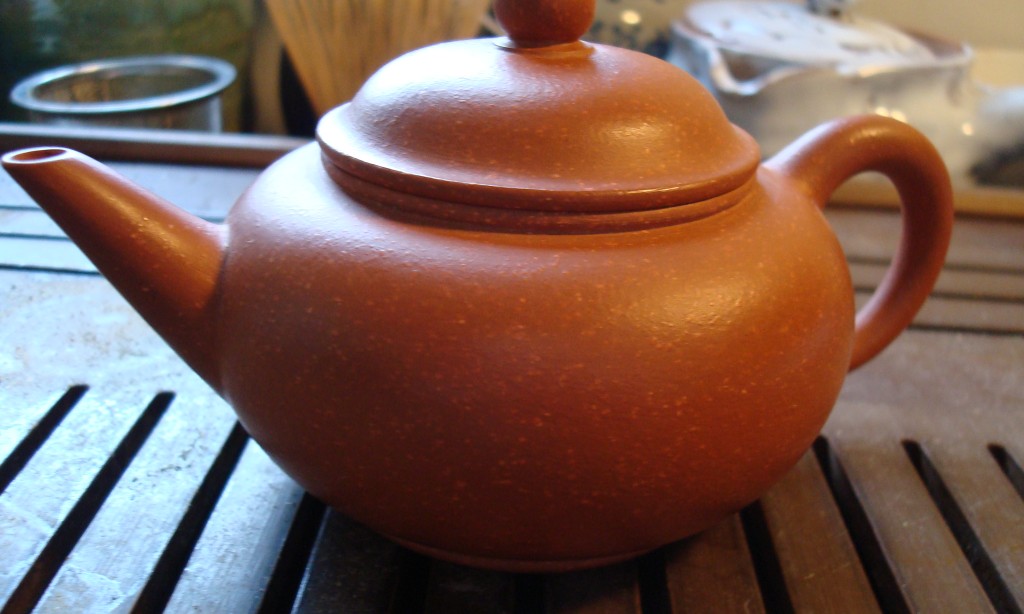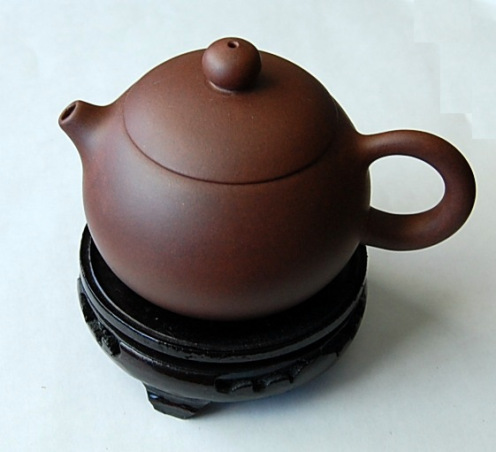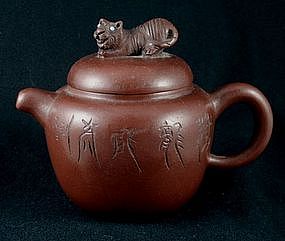The cold fountain has the taste of morning, while the purple clay brings the tincture of spring – Mei Roachen
Purple Sand Tea Pot, is a unique Chinese art form that developed during the Song dynasty (960-1279), but reached the height of its fame during the early Ming Dynasty (960-1644) through the Qing Dynasty (1644-1911). This very elegant, but simple style of earthenware became increasingly popular as tea preparation itself moved towards simplicity. The process of preparing tea during the earlier Tang Dynasty (618-907) involved grinding of leaves and the addition of incense. As this complex method began to fall out of favor it was replaced with the use of simple, but wonderful whole tea leaves and buds. The unglazed and uncolored purple sand clay teapot proved it could best capture the real color and fragrance of this new style of tea. In addition, its aesthetics reflected the cultural and philosophical ideas of the times. Transcending its purpose of brewing tea, zisha tea ware became a symbol of simplistic beauty.
Zizha pottery can also be referred to by the name of its place of origin, Yixing. Approximately five to six thousand years ago ceramic activity first emerged in the city of Yixing which is located in the southern Jiangsu Province. At that time, Yixing city was one of the main production areas of celadon pottery in the south, but in the Tang Dynasty potters started to teem with zisha ni or purple sand clay. By the early Ming Dynasty, the popularity of this specialized form of pottery increased, and replaced other ceramic ware to become the preferred tea accessory. Traditionally, Yi Xing tea pots are used for oolong, puer and black tea. In some cases green tea can be infused in a pot, but you have to be careful not to over brew the tea leaves since these pots maintain a very high temperature of water for a sustained period of time.
In the Song Dynasty it was decided that the zisha clay was the best material for brewing tea. The reason for this is its distinctive mineral content. The clay is rich in iron, quartz, mica, kaolin, hematite, isinglass, in addition to many other trace minerals. The iron contained in the clay helps sustain the temperature of the heated water, allowing for a very rich and complex infusion of tea. The quartz and other components leave mineral remains after the clay is fired at 1100-1180 degrees Celsius. This creates a distinctive double pore surface. This highly porous structure is the key element that makes Yixing ware indispensable for fine tea drinking. These many microscopic holes not only allow the pot to adapt to drastic changes in temperature, but also allow the tea to breathe which in turn brings out the fragrance, color and taste of the original tea leaf. The tea’s delicate oils are absorbed into the walls of the pot, creating yet another enhancement of flavor. Therefore, brewing one type of tea will give a distinctive character to your zisha ware.
Source: sevencups.com







